10 Unusual Plant Pollinators From The Animal Kingdom
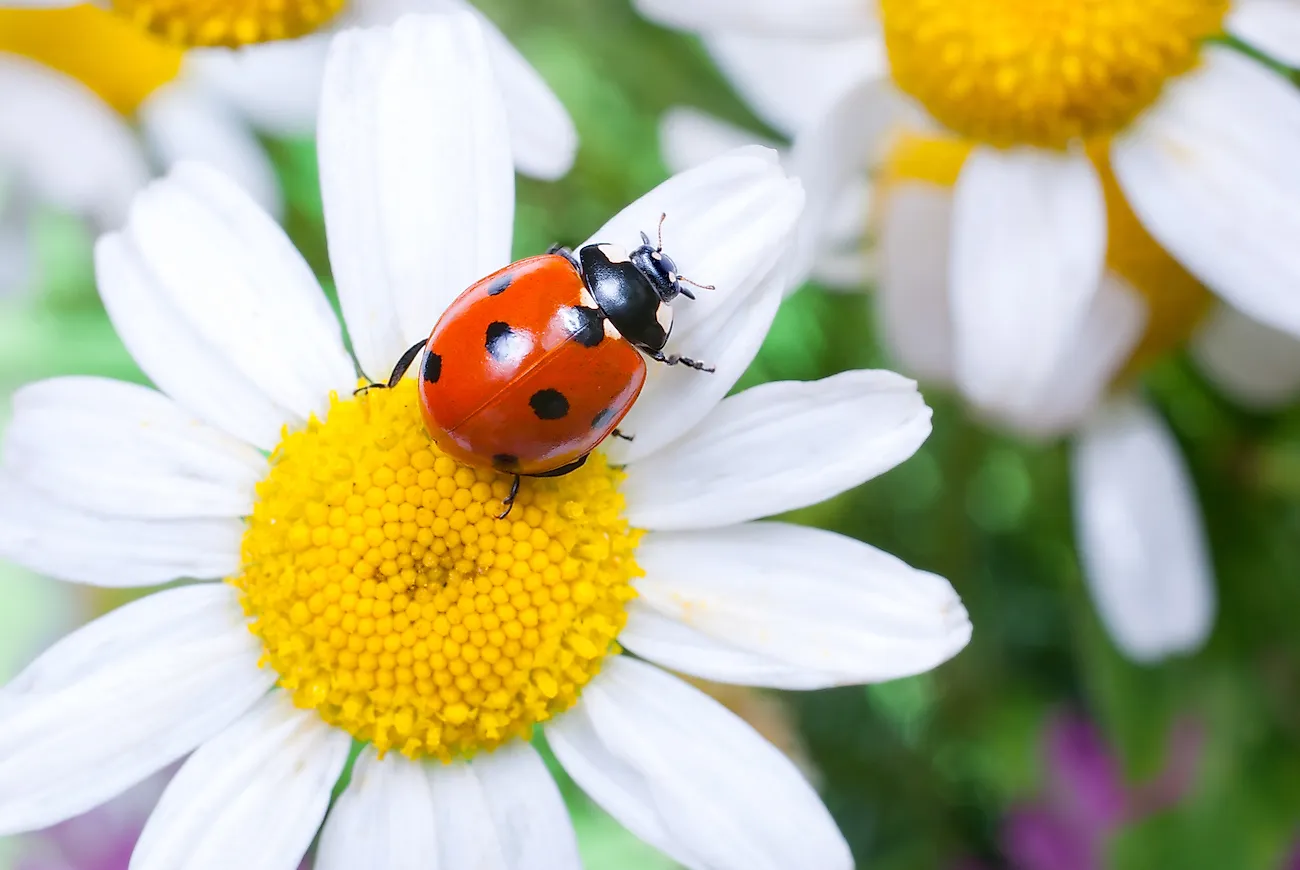
- Small lizards like geckos and skinks pollinate while they forage through leaf litter.
- Pollination by elephants has its own specialized name: Elephophily.
- Honey possums pollinate by searching out nectar and pollen, not honey.
Although pollination is essential for all plants to reproduce, very few can do so on their own. In fact, over 80% of plants and flowers, including more than 1400 varieties of crops grown worldwide to produce everything from food and beverages to medicine and clothing, require assistance to pollinate. When pollen grains move from flower to flower of the same species, it allows plants to reproduce healthy and fertile seeds. Generally, pollinators like birds, bees, and butterflies are best at spreading pollen as they visit flowering plants for food, shelter, mates, or nesting materials. Read on to discover 10 interesting facts about some of the more unusual animal pollinators.
Elephants
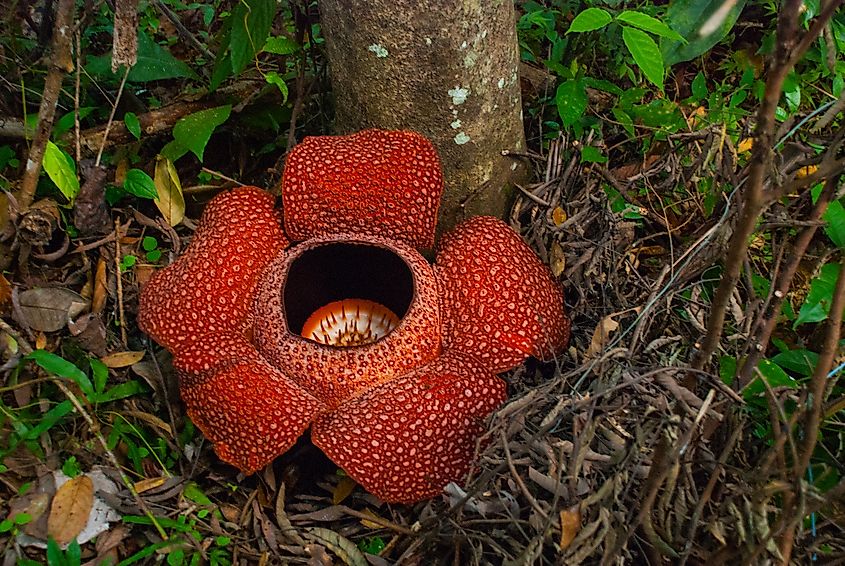
As one of the world’s largest flowers, it’s not surprising the Rafflesia plant also has the largest animal pollinator, elephants! These ground level flowers are unique in many ways, including their parasitic attachment to other plants and a rancid smell which has gained it the nickname “corpse plant”. As elephants migrate through the rainforests of Indonesia the large pollen grains of the Rafflesia attach themselves to their feet, spreading out in a process called Elephophily, meaning pollination via elephants.
Lemurs
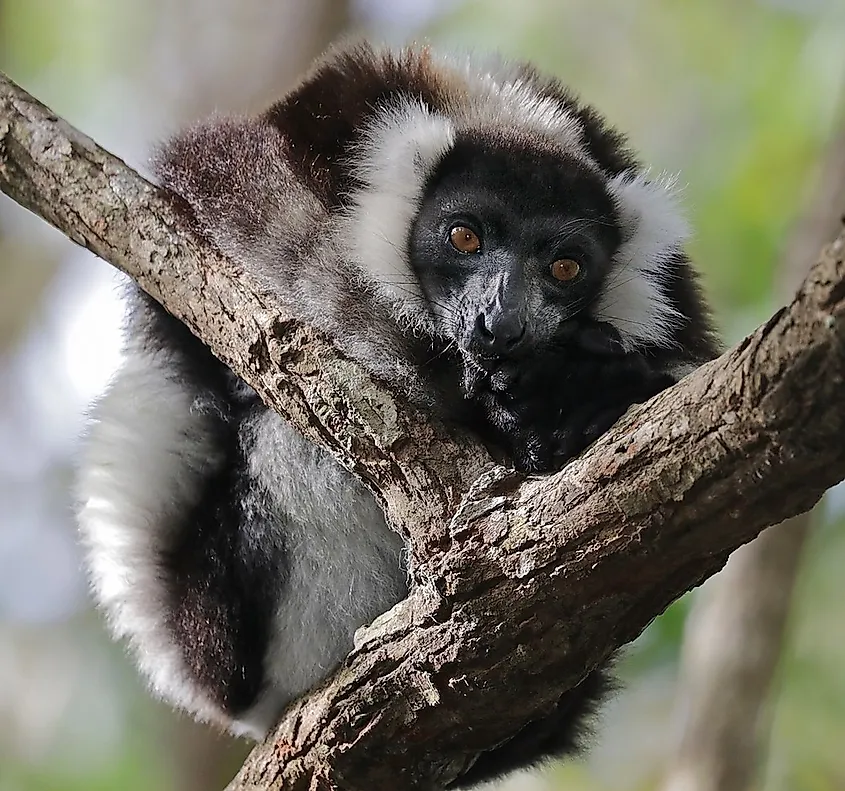
Madagascar is home to a wondrous variety of unique plants and animals, including lemurs and the Traveler’s Palm tree. Not surprisingly, these two share a symbiotic relationship in the island’s forest. Both the Black-and-white ruffed lemur (Varecia variegata) and the Black lemur (Eulemur macaco) enjoy a snack of nectar by tearing open the tough flowers of the Traveler’s Palm and dipping their snouts and long tongues in for a sweet treat. Pollen collects on their muzzle, fur, and forearms and is transferred from tree to tree, making the lemur the main pollinator of this plant.
Honey Possum
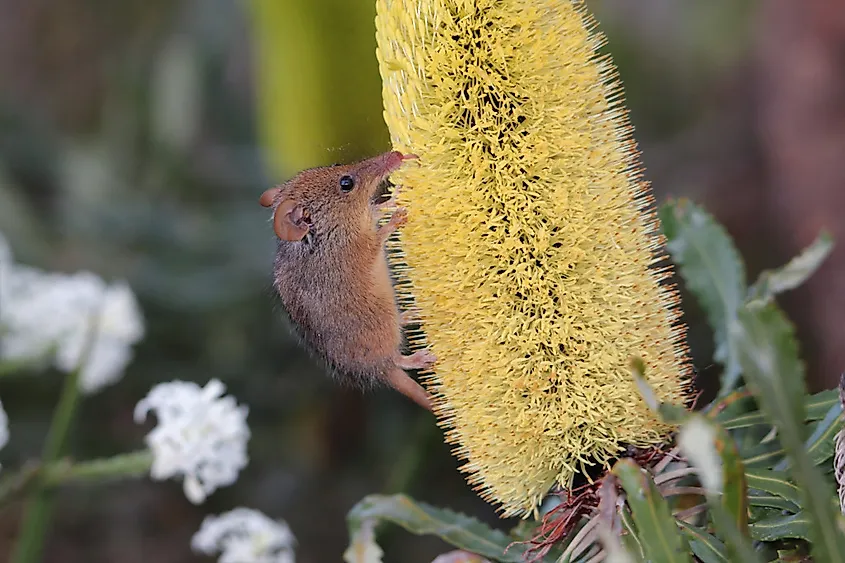
Similar to the lemur, Australia’s honey possums have a synergistic coexistence with the banksia and eucalyptus trees. This tiny marsupial doesn’t actually eat honey, instead it uses its prehensile feet and tail to grasp and dangle from tree limbs as it sips flower nectar using its long long tongue. With its tail, limbs, and pointed snout dusted with pollen, the honey possum pollinates as it swings and hangs from branch to branch.
Geckos
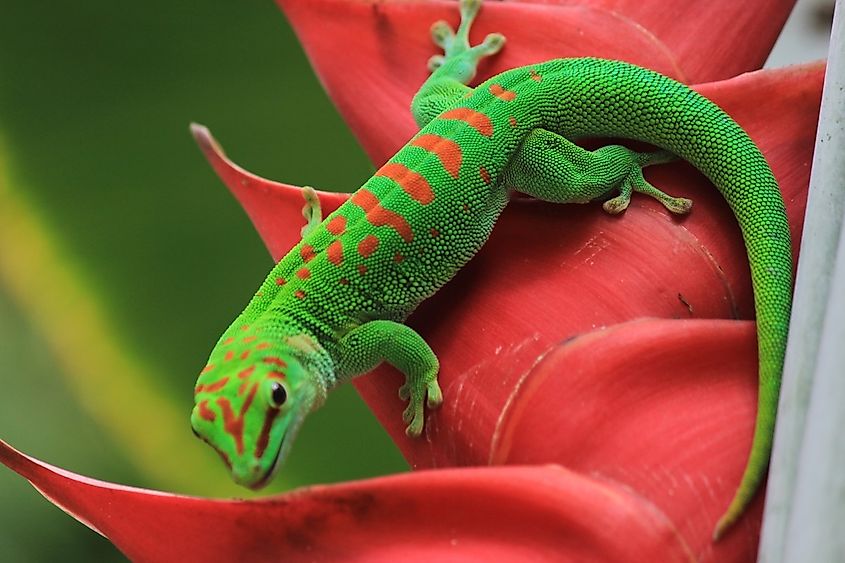
In neighboring New Zealand, numerous scientific studies have been conducted on the ways in which geckos pollinate the island nation’s many varieties of wild flowers. Without the fur of other animal pollinators scientists wanted to know how these tiny lizards distribute pollen as they stop to sip the nectar. Experiments revealed that the sticky sap from trees and syrupy liquid emitted from aphids clings to the geckos bodies, trapping tiny bits of pollen with it. As the geckos forage, they rub their bodies up against neighboring plants resulting in pollination.
Bushbabies
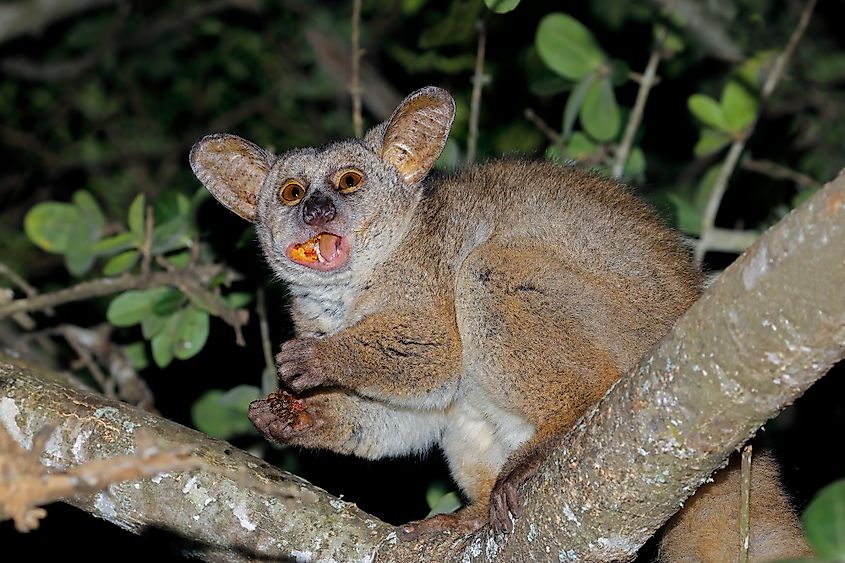
These adorable pollinating primates, also called galagos, are native to sub-saharan Africa. Better known for their wide eyes and wailing, baby-like cry, bushbabies are essential to the pollination of the Baobab Tree. With its white and yellow flowers and sweet scent, the Baobab tree produces fruit containing many nutrients that benefit bushbabies and humans alike. In addition to eating the ripe fruit, bushbabies enjoy a sweet snack of syrupy nectar when the tree is in flower. In this way, bushbabies spread both seeds and pollen through their consumption of the plant.
Sugar Gliders
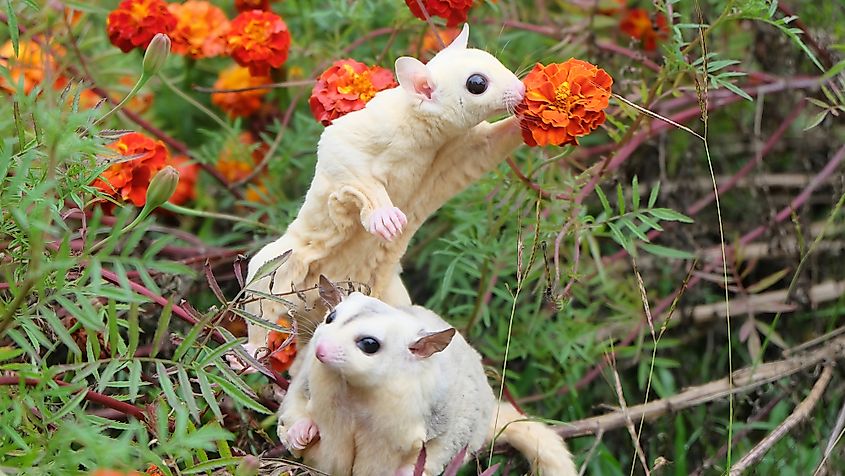
Another pint-sized pollinating possum, sugar gliders spread the membrane between their arms and legs to sail over 150 feet through the air. This gliding ability makes it possible to cover huge swaths of forest in search of food, and to spread pollen widely. Like the honey possum, sugar gliders enjoy eating pollen and drinking nectar from a variety of plants, spreading remnants of their meals that cling to their furry bodies and snouts.
Skinks
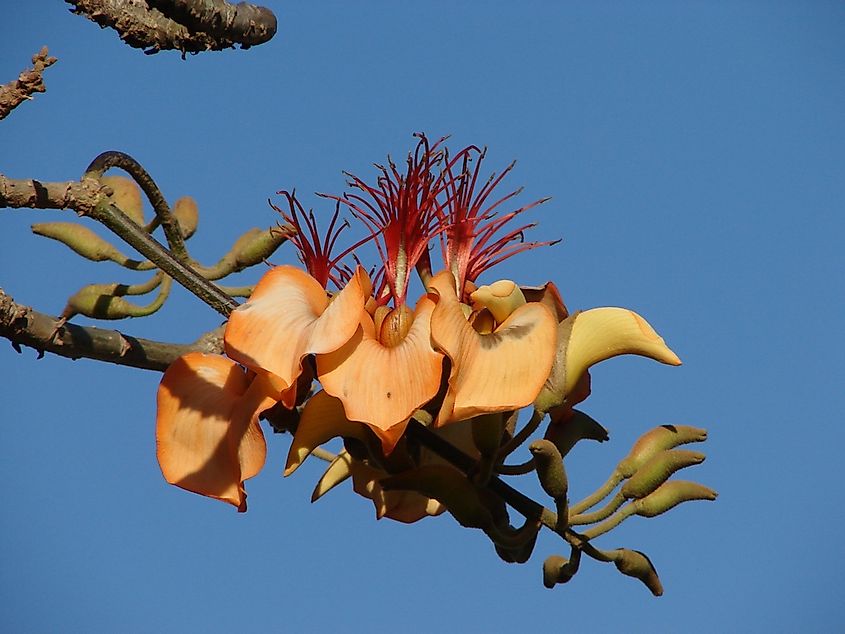
Like their lizard cousins in New Zealand, the Noronha skinks of Brazil are unlikely partners in pollination. During the dry season the mulungu tree blooms, and the small skinks slip inside the flower to sip out the nectar to hydrate. Pollen adheres to the scales of their body, and spreads as the skinks move from flower to flower in search of something refreshing to drink during the drought.
Ladybugs
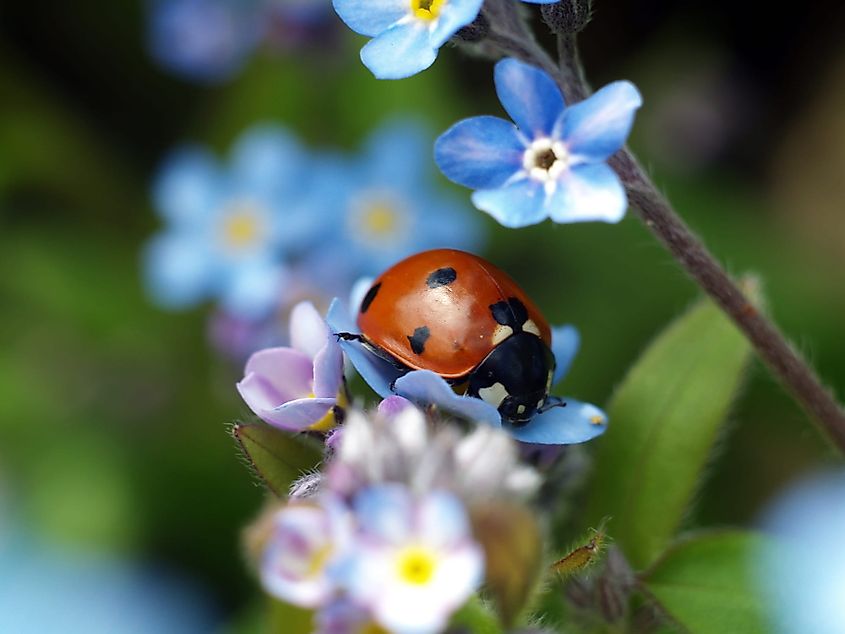
In Austria ladybugs are thought to be lucky charms, bringers of good luck and prosperity. These beauteous beetles certainly bring both to the plant world. In addition to being the natural enemy to plant destroying aphids, ladybugs are prodigious pollinators as they land from one wide opening flower to the next in gardens worldwide.
Bats
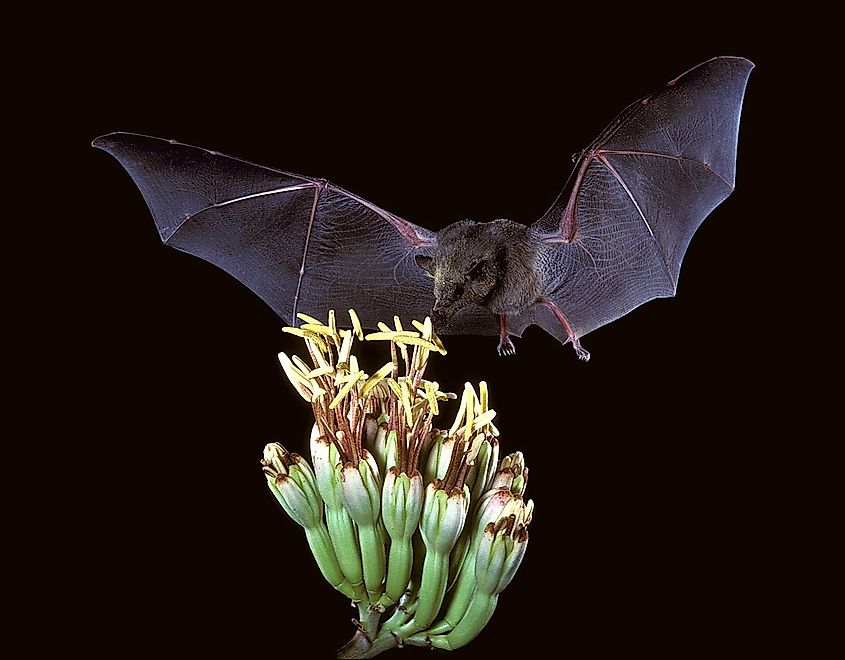
Most of the animal pollinators on this list do their dining during the day, but what about some of the world’s rarest flowers that blossom only at night? Among the night bloomers are many cactus species, like agave, which bloom after dark to conserve water and energy. Fortunately, nectar hungry bats don’t need the light to find these flowers, attracted by their strong odor and found using echolocation.
Elephant Shrew
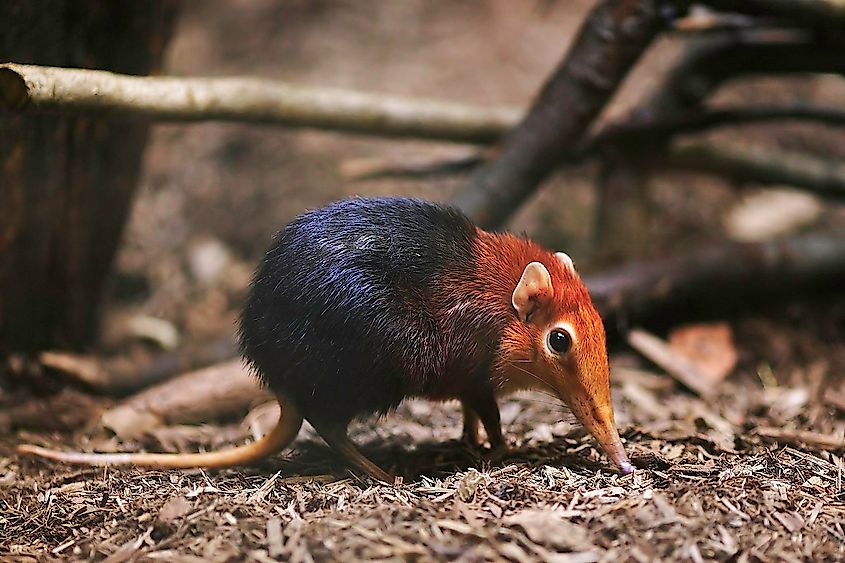
This list began with the largest animal pollinator, the elephant, and ends with its tiny cousin, the elephant shrew. An improbable member of the family of African mammals that includes aardvarks, sea cows and, of course, elephants, these small creatures use their strong, long, and malleable trunk-like nose to search the leaf-litter of woodlands and thickets. Along with meals of ants and termites, elephant shrews wash down their dinners with nectar from a variety of plants including the pagoda lily, spreading pollen as they travel.
Everywhere from Africa to New Zealand, on plants that vary in size from the petite pagoda lily to the towering Traveler’s Palm tree, the natural world is full of these mutualistic relationships between plants and their animal pollinators.











